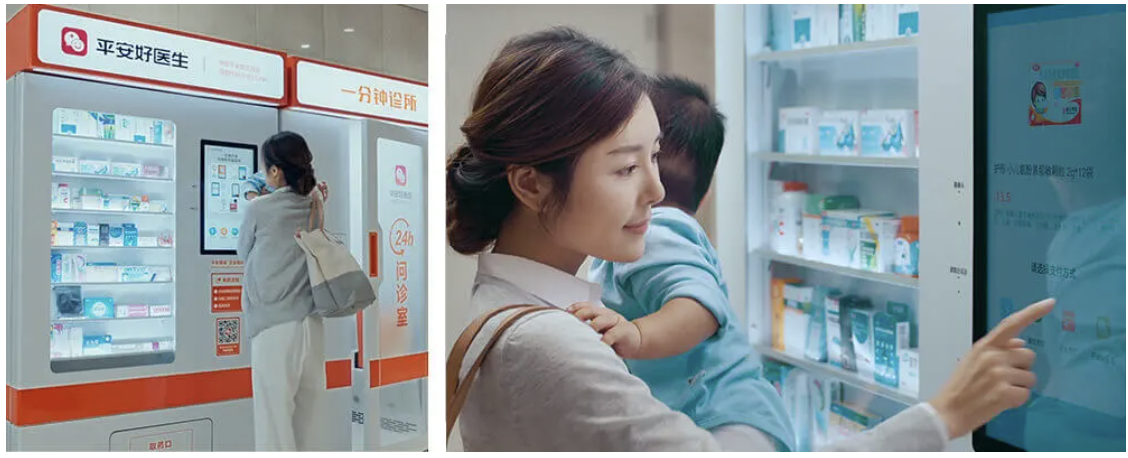Insights, Events and Videos
Integrated Healthcare: A New Insurance Model in China
People usually think about insurance only when they need to seek medical care or settle a claim. Beyond that, there’s little interaction. Ping An is changing that, creating more touchpoints with customers by pioneering a new business model that combines insurance and healthcare, connecting payers, hospitals and doctors in the process.
To help build out this new model of insurance and healthcare, Ping An, a financial services company with headquarters in Shenzhen, bolstered its healthcare offerings by buying a controlling share in Peking University Founder Group in July 2021. Founder Group runs more than a dozen highly regarded hospitals and clinics. Its holdings also include a pharmaceuticals business and a suite of healthcare information technology services.
Ping An sees the acquisition of Founder Group as an opportunity to enhance its insurance and online healthcare businesses with hospitals and other healthcare facilities. Ping An customers, for example, wouldn’t just buy health insurance policies, they would also use Ping An online telemedicine portals or in-person hospitals, and vice versa. The insurance provider envisions this extensive network as a way to build a more robust relationship with customers, boosting revenue per customer in the process.
More Than Insurance
Ping An’s approach emulates the combined insurance and healthcare model that companies in other countries, such as the U.S., have implemented through health maintenance organizations, or HMOs. Having everything within the network from insurance to healthcare facilities provides synergies that help Ping An manage healthcare and prescription costs. So far, the company has invested in and grown a range of healthcare applications and services, including Ping An Good Doctor, Ping An Smart Healthcare and Ping An HealthKonnect.
Making good health easier, the Ping An Good Doctor "one-minute clinic" enables remote diagnosis, medical advising, prescriptions and immediate claims.
Ping An Good Doctor is China’s leading online healthcare services portal, functioning as a communication platform between doctors and patients. The offering has more than 400 million users and includes online medical consultations, referrals, online drug purchases, medicine delivery and more. The platform has[1] 40,000 in-house and external doctors and more than 189,000 associated pharmacies.[2] It also has a brick-and-mortar presence with 4,000 hospitals, 1,700 checkup centers and 1,800 medical institutions.
Another investment, Ping An Smart Healthcare, which played a prominent role in diagnosing and predicting COVID-19 trends in China during the pandemic, empowers government and healthcare service providers with advanced AI-assisted diagnostic tools. Ping An Smart Healthcare covers more than 3,000 diseases and has served more than 40,000 medical institutions in 170 cities. The AI-based medical diagnosis tool was used more than 500 million times in the first half of 2021.
In addition, the company has invested in technology that it sees as crucial to rounding out its healthcare ecosystem and improving care access and efficiency. Ping An HealthKonnect is an AI-powered big data platform that provides online healthcare and health management. It uses algorithms to optimize healthcare resources by reducing overtreatment, fraud and abuse. The far-reaching service is connected to 22 provincial-level social health insurance programs.
Together, the various solutions give Ping An ways to bridge the gap between insurance and healthcare while improving and personalizing the customer experience.
“Healthcare services are a critical and differentiating part of our insurance, so we’re bundling these offerings together. We’re one of the largest online healthcare providers. We believe that this digitization of healthcare services is coming and we intend to be one of the leading players in this area,” says Jessica Tan, co-chief executive of Ping An.[3]
A Long-Term Vision
Besides boosting healthcare access for consumers, Ping An’s integrated care model has increased customer loyalty and revenue per customer. Individuals who buy insurance and integrated services, for example, generate more revenue than those who buy insurance alone. As of June 2021, nearly 62% of Ping An’s 223 million financial customers used services from the company’s healthcare ecosystem. These customers had an average of 3.2 contracts each and 41,000 yuan in assets under management, that’s 1.6 times and 2.6 times, respectively, more than customers who didn’t come through the ecosystem.
Ping An’s strategy leverages current macro trends such as virtual medicine to set up the company for long-term growth. China’s healthcare market is expected to grow from 6 trillion yuan in 2019 to 16 trillion yuan in 2030,[4] due to increasing demand and government policies supporting industry growth.
“We will accelerate the development of a closed-loop healthcare ecosystem to support the ‘Healthy China’ initiative. While financial services represent Ping An’s main focus today, healthcare will be a key development in Ping An’s future,” says Peter Ma, chairman of Ping An.
[1] https://group.pingan.com/media/news/News-2020/Ping-An-Unveils-Health-Care-Ecosystem-Strategy.html
To learn more about the The Wall Street Journal Custom series, please read here
Article 1: The future of Financial Services in China
Article 3: Changing the Face of Insurance



